Glycomet-GP 4 Forte Tablet (Glimepiride 4mg / Metformin 1000mg)
| COUNTRY OF ORIGIN | India |
|---|---|
| DOSAGE FORM | Tablets |
| GENERIC NAME | Glimepiride |
| INDICATION | Treatment of Type 2 diabetes mellitus |
| PACKAGING | 10 tablets in 1 strip |
| MANUFACTURER | USV Ltd |
| COMPOSITION | Glimepiride (4mg) + Metformin (1000mg) |
PRODUCT INTRODUCTION
Glycomet-GP 4 Forte Tablet PR belongs to a category of medicines known as anti-diabetic drugs. It is a combination of two medicines used to treat type 2 diabetes mellitus in adults. It helps control blood sugar levels in people with diabetes, glycomet-GP 4 Forte-Tablet PR should be taken with food. Take it regularly at the same time each day to get the most benefit. Your doctor will decide what dose is best for you and this may change from time to time according to how it is working according to your blood sugar levels, keep taking this medicine, even if you feel well or your blood sugar levels are controlled.
If you stop it without consulting your doctor, your blood sugar levels could rise and put you at risk of kidney damage, blindness, nerve problems, and loss of limbs. Remember that it is only part of a treatment program that should also include a healthy diet, regular exercise, and weight reduction as advised by your doctor. Your lifestyle plays a big part in controlling diabetes.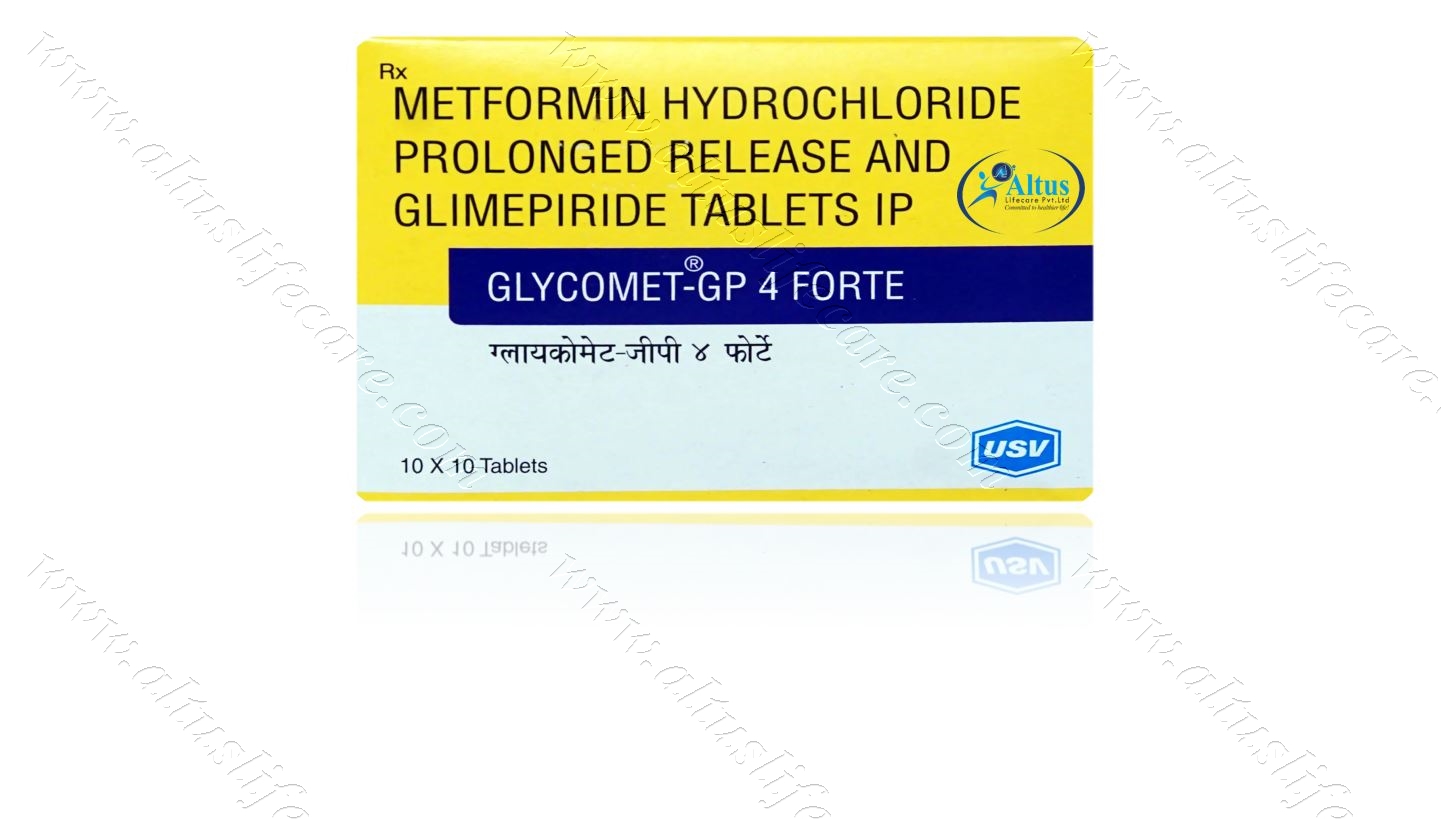
The most common side effect of Glycomet-GP 4 Forte-Tablet PR is low blood glucose levels (hypoglycemia). Make sure you recognize the signs of having low blood glucose levels, such as sweating, dizziness, headache, and shaking, and know how to deal with it.
To prevent this, it’s important to have regular meals and always carry a fast-acting source of glucose such as sugary food or fruit juice with you. Drinking alcohol can also increase your risk of low blood sugar levels and should be avoided.
Other side effects that may be seen on taking this medicine include taste changes, nausea, diarrhea, stomach pain, headache, and upper respiratory tract infection. Some people may find that they put on weight with this medicine.
You should not take it if you have type 1 diabetes mellitus, if you have diabetic ketoacidosis (high levels of acid in your blood), or if you have severe kidney or liver disease.
Before taking this medicine, tell your doctor if you have ever had heart disease. It may not be suitable. Pregnant or breastfeeding women should also consult their doctor before taking it. Your blood sugar levels should be checked regularly and your doctor may also advise blood tests to monitor your blood cell counts and liver function.
“Optimal Glycemic Mastery: Unleashing the Potential of Glimepiride 4mg and Metformin 1000mg Synergy”
This heading focuses on the synergistic impact of Glimepiride at 4mg and Metformin at 1000mg in achieving optimal glycemic control. The explanation would delve into how Glimepiride stimulates insulin release and Metformin improves insulin sensitivity, working together to create a powerful combination that maximizes the control of blood sugar levels.
“Precision in Diabetes Harmony: Navigating Glimepiride 4mg and Metformin 1000mg for Tailored Blood Sugar Management”
Here, the discussion revolves around the precision involved in selecting the dosages of Glimepiride (4mg) and Metformin (1000mg) to achieve tailored diabetes care. The explanation would explore the rationale behind these specific doses, considering the mechanisms of each medication, and highlight the importance of a carefully calibrated dosage strategy that balances optimal efficacy with individual patient needs. It underscores the significance of a precise approach in achieving successful diabetes management.
Beyond Basics: Advanced Strategies with Glimepiride Metformin
Explore advanced approaches to diabetes management that go beyond the fundamental principles. This section examines innovative strategies involving glimepiride and metformin, showcasing the potential for enhanced efficacy and improved patient outcomes.
Signs and Symptoms of Type 2 Diabetes Mellitus: Early Diabetes Signals Unveiled
Unveil the early signals associated with Type 2 Diabetes Mellitus. Explore the subtleties of these signals and their significance in the context of recognizing diabetes in its initial stages.
Diabetes Mellitus Medications: Medication Essentials for Improved Diabetes Care
Uncover essential medications crucial for improving diabetes care. This guide focuses on medications that play a fundamental role in managing diabetes effectively, ensuring individuals have the necessary tools for comprehensive diabetes care.
Symphony of Success: Drug for Diabetes Mellitus Type 2 Narratives
Narrating success stories inspired by the drug, this exploration dives into the symphony it conducts in Diabetes Mellitus Type 2 management, orchestrating a harmonious blend of strategies that contribute to successful patient narratives.
“Meds for Diabetes Mellitus Type 2: Medication Wisdom for Better Diabetes Management”
Tap into the wisdom surrounding diabetes medications for better diabetes management. This guide imparts valuable insights and knowledge, empowering individuals to make wise choices in their medication regimen to enhance control over Type 2 Diabetes.
Medications for Diabetes Mellitus Type 2: Understanding the Impact of Medications on Sleep Architecture
Sleep architecture can be influenced by diabetes medications. Explore this blog to understand the impact of medications on sleep patterns and architecture, shedding light on considerations for optimizing both medication use and sleep quality in type 2 diabetes management.
The Gut-Liver Axis and its Relevance to Treatment of Type 2 Diabetes Mellitus
Investigating organ interactions, this section explores the Gut-Liver Axis and its relevance to the treatment of Type 2 Diabetes Mellitus. By understanding how communication between the gut and liver influences metabolic regulation, the discussion aims to uncover potential therapeutic targets for diabetes management.
DM Type 2 Medications: Medication Mastery for Optimal Well-Being
Attain medication mastery with a focus on promoting optimal well-being in individuals managing Type 2 Diabetes. Explore how optimal dosages, timing, and lifestyle adjustments contribute to sustained well-being.
USES OF GLYCOMET-GP TABLET PR
- Treatment of Type 2 diabetes mellitus
BENEFITS OF GLYCOMET-GP TABLET PR
In Treatment of Type 2 diabetes mellitus
Lowering blood glucose levels is an essential part of managing diabetes. If you can control the level you will reduce the risk of getting any of the serious complications of diabetes such as kidney damage, eye damage, nerve problems, and loss of limbs. Taking this medicine regularly along with proper diet and exercise will help you live a normal, healthy life.
SIDE EFFECTS OF GLYCOMET-GP TABLET PR
Common side effects of Glycomet-GP
- Hypoglycemia (low blood glucose level)
- Headache
- Nausea
- Diarrhea
- Flatulence
HOW TO USE GLYCOMET-GP TABLET PR
HOW GLYCOMET-GP TABLET PR WORKS
SAFETY ADVICE

Alcohol

Pregnancy

Breast feeding

Driving

Kidney
Use of Glycomet-GP-4 Forte Tablet PR is, however, not recommended in patients with severe kidney disease. Regular monitoring of kidney function test is advisable while you are taking this medicine.

Liver
Glycomet-GP-4 Forte Tablet PR is generally started with low dose in patients with mild to moderate liver disease and its use is not recommended in patients with severe liver disease.

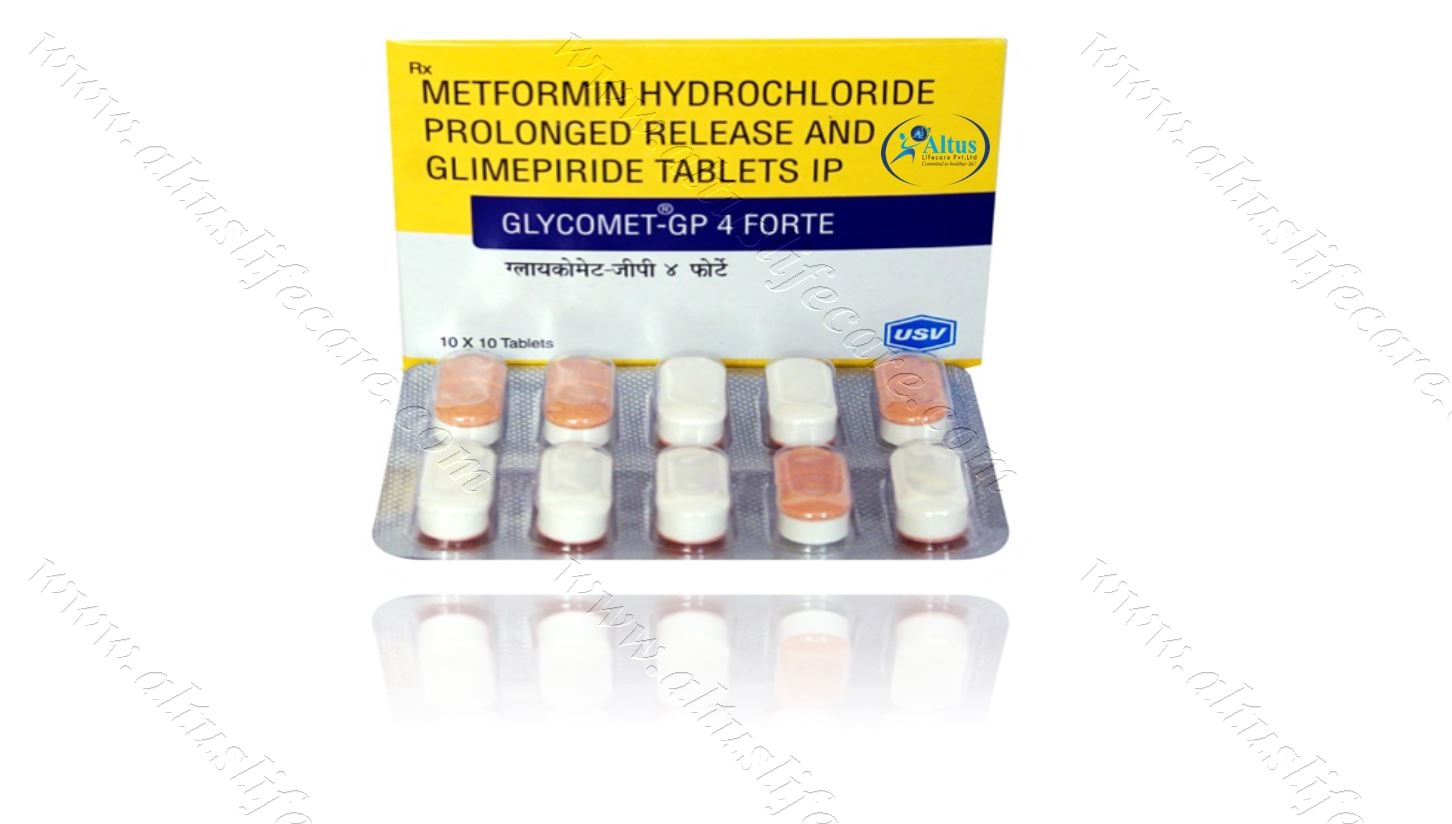
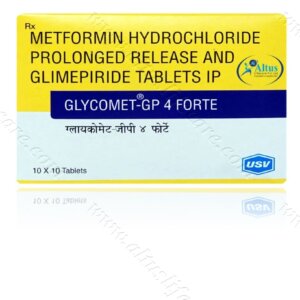
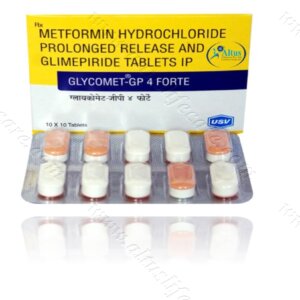

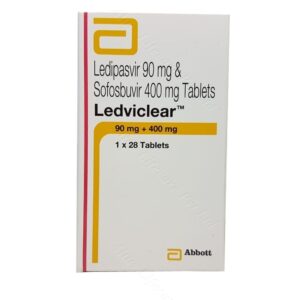


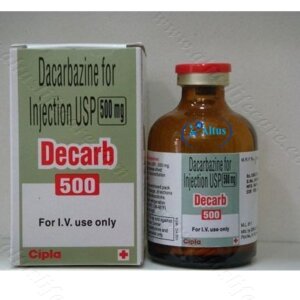
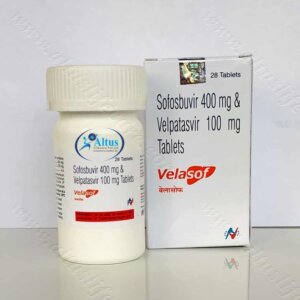
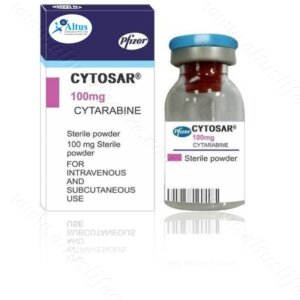








Kori (verified owner) –
“Fast shipping and unbeatable product quality – couldn’t be happier!”
Madelynn (verified owner) –
Type 2 diabetes has inspired me to appreciate the journey of self-discovery, recognizing the growth and resilience that can emerge from the experience.